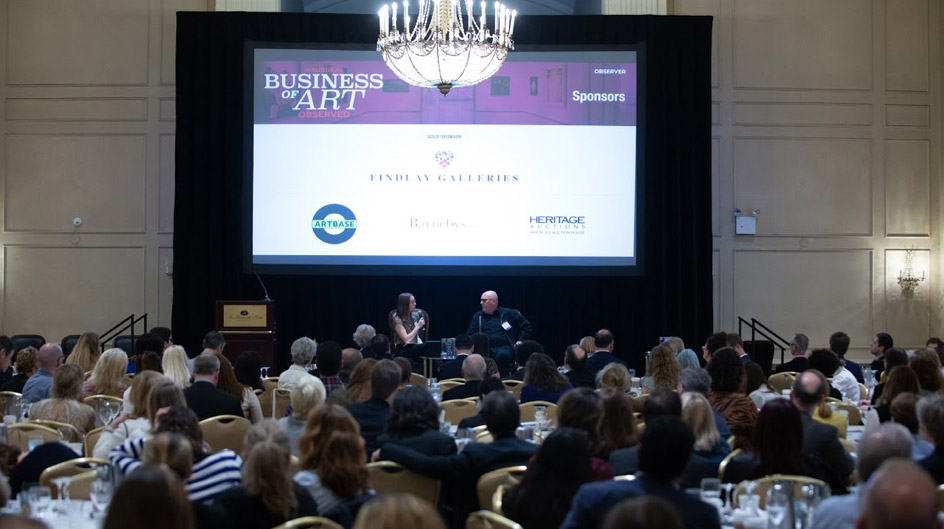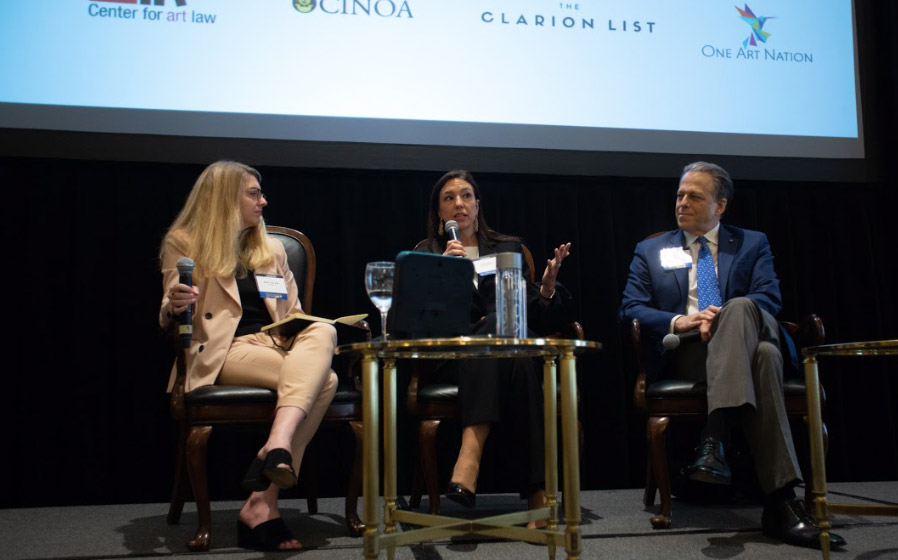5 Questions with the Editorial Director of Observer
Aug 14, 2019
Today we chat with Mary von Aue, Editorial Director of Observer and host of the inaugural Business of Art Observed.
Mary joined Observer from the start-up publishing world, where she built editorial strategies and new outlets in the media landscape. She has a master’s degree from Columbia University that focused on Arabic literature and for years covered contemporary art and literature from the Middle East. Today, she continues to focus her editorial lens on the ways in which the arts intersect with current events and the business world.
Observer is known for bringing the latest in news, culture, and luxury. Why are you putting more attention back on art specifically?
We have a long history of covering art at Observer, but this year I wanted to take the conversation to the next level and explore the industry in a specific Observer way: that is, looking at the power players that are influencing the industry. I think that at this moment, Observer is best equipped to cover the shapeshifting art world and the innovation that is transforming it. Thanks to a team of writers and experts who cover both the cultural and business beats, we’re able to approach the industry holistically and capture the ecosystem from different angles. That tends to yield more nuanced, cross-sectional reporting, and for an industry that is changing as rapidly as the art world, it’s needed.
You hosted your inaugural Business of Art conference in New York on May 21. What was the reason for bringing this format of conversation to the market?
I think it was long overdue. When you’ve got an industry that has seen several disruptions in the last decade, being able to measure that impact is imperative. We wanted to bring all different players from the art world to an interactive platform not only for discussion and debate, but to ask what’s next. It’s not easy to stay ahead of innovation or point to the next big disruptor, but these conversations can help the art community build better businesses.

What topics did you address and why do you feel they are important?
What didn’t we cover!? Observer’s online strategy has always been to understand industries through their players, technologies and diverse influences as a way of capturing the zeitgeist. I think this event was a clear reflection of that strategy, as evident in our far-reaching topics. We looked at how the rules are changing for everyone in the business of making, buying, selling or displaying art, how regulation is impacting the market and how technology solutions can drive the industry forward.
We tackled everything from art fairs to risk management, and yet this is just the tip of the iceberg. I walked away with a wealth of new insights from our panelists, but also with a sense of excitement because there’s still so much more to discuss. That’s why we’re hosting another Business of Art Observed on November 12, this time as a full day event, with more opportunities for the art community to share insight and collaborate.

Educating the industry to create greater transparency and standards is something we are passionate about. What art business professionals do you feel would benefit most from attending this conference?
It’s tough to point to just one professional who would benefit most, as our last event created a welcome space for artists, gallery owners, auctioneers, lawyers, private collectors and beyond. Again, I feel these events are a clear reflection of Observer’s editorial brand, which offers our readers rare access to industry news from a nuanced perspective. If you work in the art world and you’re looking to share your knowledge, experience or challenges with the community, we’ve created a space for exactly that kind of discourse.
How important is it for a professional to stay up to date on trends and issues to advance their career?
To be honest, I can’t imagine professional success in any industry without that kind of participation. Just in the last few weeks, Observer has discussed how artificial intelligence is affecting art collectors and curators, how policy is changing the international art market, how blockchain is altering the process of art dealing. We wanted to host this conference to give people an opportunity to acknowledge these ripple effects and discuss ways in which they can navigate the challenges as a community.
View recordings from the inaugural Business of Art Observed Symposium as leading figures from the art industry share their experience. WATCH NOW!

:sharpen(level=0):output(format=jpeg)/wp-content/uploads/2019/08/5-Questions-with-the-Editorial-Director-of-Observer.jpg)
:sharpen(level=1):output(format=jpeg)/wp-content/uploads/2024/05/The-Art-Lawyers-Diary-1.jpg)
:sharpen(level=1):output(format=jpeg)/wp-content/uploads/2024/04/5-Questions-with-Bianca-Cutait-part-2-1.jpg)
:sharpen(level=1):output(format=jpeg)/wp-content/uploads/2024/05/20231208_164023-scaled-e1714747141683.jpg)
:sharpen(level=1):output(format=jpeg)/wp-content/uploads/2024/04/header.jpg)
:sharpen(level=1):output(format=jpeg)/wp-content/uploads/2024/04/5-Questions-with-Bianca-Cutait-part-1-1.jpg)
:sharpen(level=1):output(format=jpeg)/wp-content/uploads/2024/03/5-Questions-with-Alaina-Simone-1.jpg)